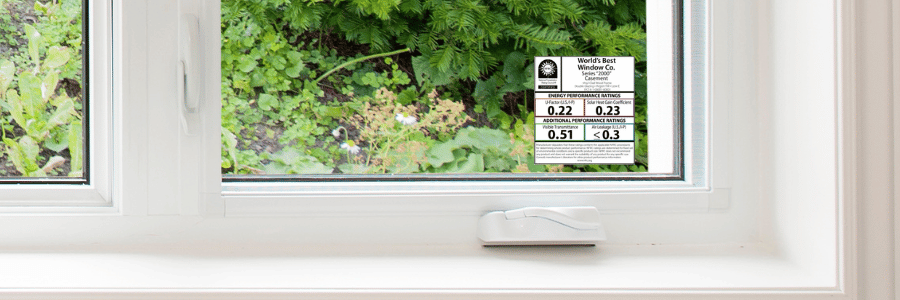
When shopping for new windows or doors, understanding energy performance labels is crucial. These labels provide important information about a product’s energy efficiency and can help you make informed decisions that could lead to significant savings on your energy bills. In this blog post, we’ll break down the key components of energy performance labels and explain how to interpret them.
What Are Energy Performance Labels?
Energy performance labels, often found on windows, doors, and skylights, provide data about how well these products insulate and protect your home from external elements. These labels are typically issued by the National Fenestration Rating Council (NFRC), an independent organization that tests and certifies the energy performance of fenestration products.
Key Components of Energy Performance Labels
U-Factor
- Definition: The U-Factor measures the rate of heat loss through a window, door, or skylight. It is expressed as a number between 0.20 and 1.20, with a lower number indicating better insulation.
- Interpretation: A lower U-Factor means the product is better at keeping heat inside during the winter, which is particularly important in colder climates.
Solar Heat Gain Coefficient (SHGC)
- Definition: The SHGC measures how much solar radiation is transmitted through the window, door, or skylight. It is expressed as a number between 0 and 1, with a lower number indicating less heat is allowed through.
- Interpretation: In warmer climates, you might want a lower SHGC to reduce cooling costs, while in colder climates, a higher SHGC can help warm your home naturally.
Visible Transmittance (VT)
- Definition: VT measures the amount of visible light that passes through the window, door, or skylight. It is expressed as a number between 0 and 1, with a higher number indicating more light is transmitted.
- Interpretation: Higher VT values mean more natural light enters your home, which can reduce the need for artificial lighting and create a brighter living space.
Air Leakage (AL)
- Definition: AL measures the amount of air that passes through the joints of a window or door. It is expressed in cubic feet of air passing through a square foot of the product per minute (cfm/ft²).
- Interpretation: A lower AL value indicates a tighter seal, which means less air leakage and better energy efficiency. However, this rating is optional and may not be present on all labels.
Condensation Resistance (CR)
- Definition: CR measures the ability of a window or door to resist the formation of condensation on its interior surface. It is expressed as a number between 1 and 100, with a higher number indicating better resistance to condensation.
- Interpretation: Higher CR values are desirable, especially in humid climates where condensation can be a problem.
How to Use This Information
Understanding these components will help you choose the right windows and doors for your home, based on your specific climate and energy efficiency needs. For example:
- Cold Climates: Look for products with a low U-Factor to minimize heat loss and a moderate SHGC to allow some solar heat gain.
- Hot Climates: Choose products with a low SHGC to reduce cooling costs and a low U-Factor to keep out the heat.
- Moderate Climates: Focus on balanced performance across all metrics to ensure year-round comfort and efficiency.
Conclusion
Reading and interpreting energy performance labels is essential for selecting the right windows and doors for your home. By understanding the U-Factor, SHGC, VT, AL, and CR, you can make informed decisions that enhance your home’s comfort, reduce energy costs, and contribute to environmental sustainability.
Ready to find energy-efficient windows for your home? Try our advanced search feature to explore a wide range of options from leading manufacturers. Compare products based on their energy performance and find the perfect match for your needs.
Click below to try our advanced window search!
